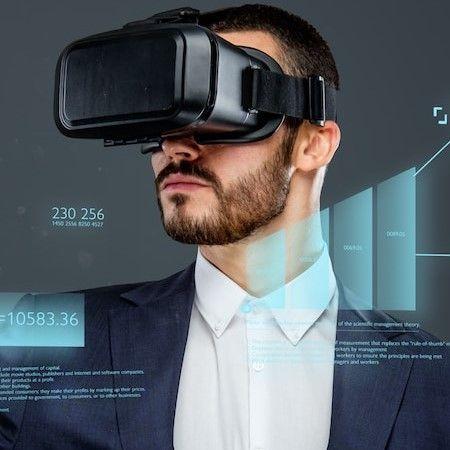Augmented Reality: Shaping the Metaverse's Future
Written by Luis Paradela|Posted on September 20, 2022

The metaverse is the next big thing being pushed in the tech world, but it’s more than just a buzzword. In a nutshell, it refers to virtual worlds rendered in computer graphics in which we can socialize, shop, play games, and conduct business. Basically, a more immersive, interactive internet, often purported to rely on blockchain and virtual reality technologies. But how immersive, will the metaverse be? And how will we interact with it? It’s a question of degrees and augmented reality is shaping up to be the best way to engage with the metaverse.
Drawbacks of Virtual Reality
A lot of metaverse promotion shows virtual reality (VR) as the main method to enter the metaverse. This includes Meta’s (formerly Facebook’s) pitch, as Zuckerberg and friends jump into cartoonish avatars and hang out in virtual meeting rooms. It’s easy to see why VR is at the forefront of metaverse evangelism. The total immersion of virtual reality, with a full headset and motion controllers, is more dramatic and impressive. Not to mention the fact that manufacturers (such as Meta) have the hardware to sell.
Once prohibitively expensive and clunky, and requiring a connection to even more expensive high-powered computers, VR kits are now significantly cheaper and more lightweight while still providing high-fidelity visuals.
Nonetheless, the discomfort of being strapped into a headset is still noticeable, especially with prolonged use, to say nothing of the disorientation or queasiness that can affect some users. While VR can connect you to your friends and co-workers in different locations when you come together in the metaverse, its total immersion also cuts you off from the people around you, not to mention any inanimate objects. The potential for accidents resulting in a lack of awareness of one’s surroundings also limits the scope of VR. However, there is a way to interact with a digital metaverse while still being aware of the real world.
AR Offers the Best of Both Worlds
Augmented reality, or AR, refers to the overlaying of interactive digital graphics over the real world. This technology is already widely available via smartphone cameras and used in hit games like Pokémon GO, or fun tools such as AR emojis. Because smartphones are so widely used and contain advanced cameras, they make sense as an entry point for the metaverse, but there is potential for more than that. br>AR glasses and headsets are still in their early stages, but companies such as Magic Leap and NReal have released working products with see-through lenses that are much slimmer and more comfortable than VR equipment. Some mixed-reality products, such as Microsoft’s HoloLens, actually allow the user to switch between VR and AR modes, a flexible approach that may be the most useful for imagining how best to engage with the metaverse. With big tech throwing its weight behind the metaverse, it’s very likely that much more comfortable and affordable commercial AR glasses are on the horizon.
Because AR integrates digital objects into our real world and relates them to where our real bodies are, it does not cause the same dissonance in our brains that can lead to feelings of nausea, as can occur with VR. It allows users to enjoy the metaverse without cutting themselves off from others.
VR may offer higher visual fidelity, but this appeals to those seeking a higher level of escapism. This is suited to immersive gaming and entertainment experiences, but for broad adoption to take place, the metaverse should be able to integrate seamlessly into our regular lives in the real world. And it’s already happening.
AR is Already Being Used in Business
Businesses are already using AR to extend the reach of their brand and offer nascent metaverse services. For example, furniture stores such as Wayfair allow prospective buyers to insert AR versions of products in their homes via an app, to check how furniture should be placed. Cosmetics or clothing retailers allow users to ‘try on’ or modify products before buying using AR apps. In the world of design and technology, AR using virtual parts also serves as a useful collaboration tool. In short, when it comes to many of the activities that are supposed to be possible in the metaverse, AR is already ahead of VR.
The fact that such tools are already in place shows how AR succeeds in connecting metaverse objects to important things (e.g. our homes, our colleagues) in the real world. In a metaverse that is meant to empower deeper and more meaningful connections, this will be crucial in developing its future.
Is Your Business Future-Ready?
Accelone’s nearshore software development services include a team of experienced augmented reality and virtual reality developers who can create interactive and immersive metaverse experiences to suit your needs. To discuss how we can enhance your business using AR, contact us online or call us at (800) 863-6814.

Luis Paradela
Chief Development Officer
Co-Founder
Buenos Aires
View profile